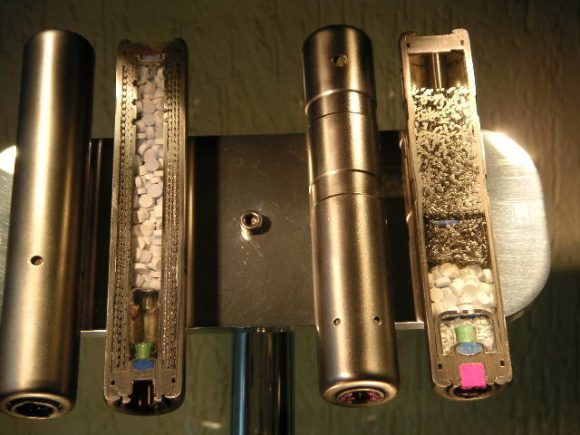
I heartily recommend the current issue of Bloomberg Businessweek for a brilliant article on the Takata airbag saga, recounting the dubious decisions the company made in the 1990s, leading to the enormous legal entanglements of today. The title of the piece is “60 Million Car Bombs.”
I am fascinated by Takata’s story, not only because I own a 2003 Toyota Avalon that had an airbag replacement recall recently, but because it relates to the machining business that many of my customers are in.
The Bloomberg story indicates that Takata employees understood the danger of using ammonium nitrate as the explosive for propelling gas into the airbag so incredibly fast that it could cushion a human’s body before it struck the steering wheel or the window. Ammonium nitrate is significantly cheaper than compounds used by other manufacturers of airbags.
The airbag is a brilliant invention, and it is estimated that it saves 2500 lives each year. The issue is not whether the design of the airbag device itself is flawed. It seems to be an inspired design and the canister for the propellant tablets which is commonly being made on Hydromat rotary transfer machines does not seem to be the root of the problem.
The problem is in the explosive, ammonium nitrate, which was used to blow up the Murrah Federal Building in Oklahoma City. It tends to be less than reliable in high humidity after many years in an airbag canister.
Lawyers for scores of people who were killed or injured by shrapnel from Takata airbags have considerable evidence that the higher-ups had knowledge that the ammonium nitrate was problematic for a decade before the first airbag mishap. It is unclear why Takata stuck with the propellant, even after the early explosions in 2003, except that they were fearful to switch for competitive reasons. There are several other airbag makers. None use ammonium nitrate today. Takata’s market share has dropped from over 17% to a projected 5%. It’s potential legal liability is substantially more than the company is worth today.
Honda may be the most exposed financially. It has been intimately involved with Takata for decades having a small percentage of ownership. More Takata airbags are in Hondas by far than any other brand. Even the Honda Gold Wing Motorcycle has a Takata airbag. A large percentage of Honda Odyssey minivans have them, plus Acuras, Accords and Civics.
Honda is heavily on the hook and they know it. The legal process is moving along. Honda has settled more than 100 lawsuits related to airbags.
Potentially 40 to 100 million airbags could be recalled, but so far only 8 million have been replaced.
The Takata scandal has some things in common with the Volkswagen cover-up on diesel emissions. Volkswagen management could not figure out a way to economically meet the pollution requirements, so they decided to fake the data and fool the ignorant government checkers. The scheme worked for many years and the company made big profits. Nobody was killed by the fraud.
Takata made a fortune building airbags knowing they could eventually hurt people. That is more evil than a fraud like Volkswagen’s.
Meanwhile, machining companies are frantically trying to get in on the airbag replacement windfall. Some are building canisters for Takata, but most are making stuff for Takata competitors.
The Bloomberg piece opens with the story of a man who was driving a 2002 Honda Accord he had bought used in 2015. He was involved in a small accident. His son and dog were in the vehicle when two airbags deployed. He was killed when flying shrapnel severed his carotid artery. The others in the car were uninjured. Very bad luck for him. Very bad choices by Takata.
Question: Is Honda as guilty as Takata in this scandal?
Click here to read “60 Million Car Bombs” in Bloomberg Businessweek.

2 Comments
Some would argue that the lives lost and health compromised from diesel pollution due to illegal emissions is far higher that those from defective airbags, just not as dramatic or direct and, therefore, not as noticeable or individualized. Unlike with airbags, drivers and non-drivers alike are affected by the pollution.
My experience in the industry is that no engineer does a cold-hearted death/injury versus cost calculation at the design phase and decides that it is OK to injure or maim X number of people in the interests of costs. The opportunity for moral compromise arises once the problem presents itself and in determining an appropriate response.
Every vehicle manufacturer that used those air bags is at fault. Their Engineers approved the products used in their vehicles. Honda is more culpable only if they had inside information. The real bad guys are the ones who placed price above safety.